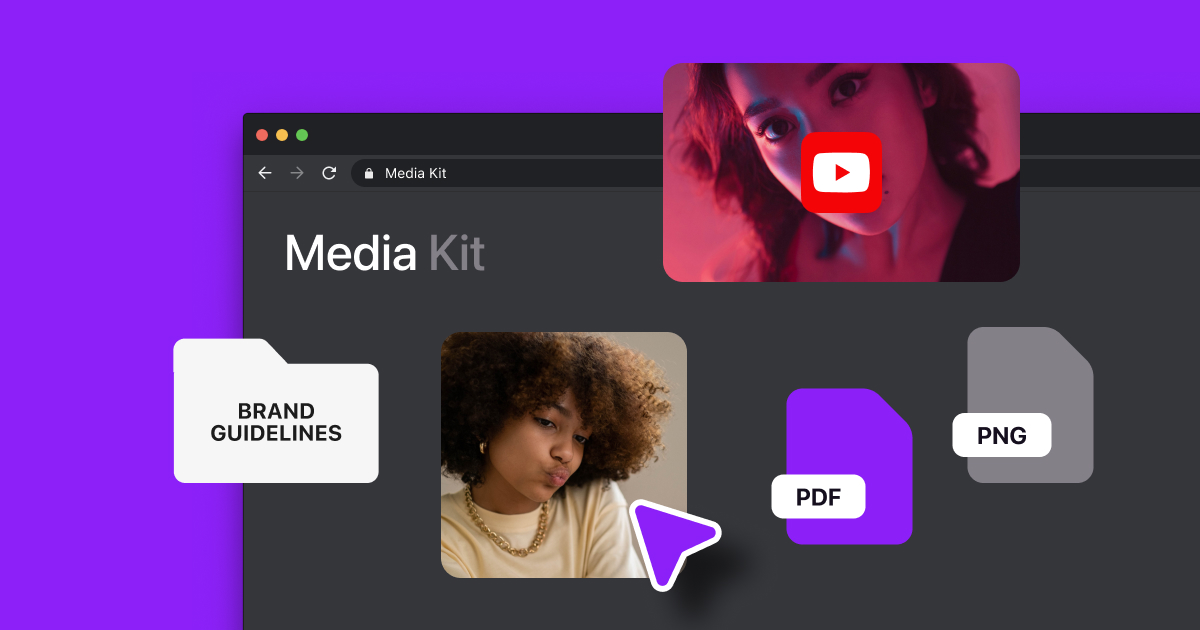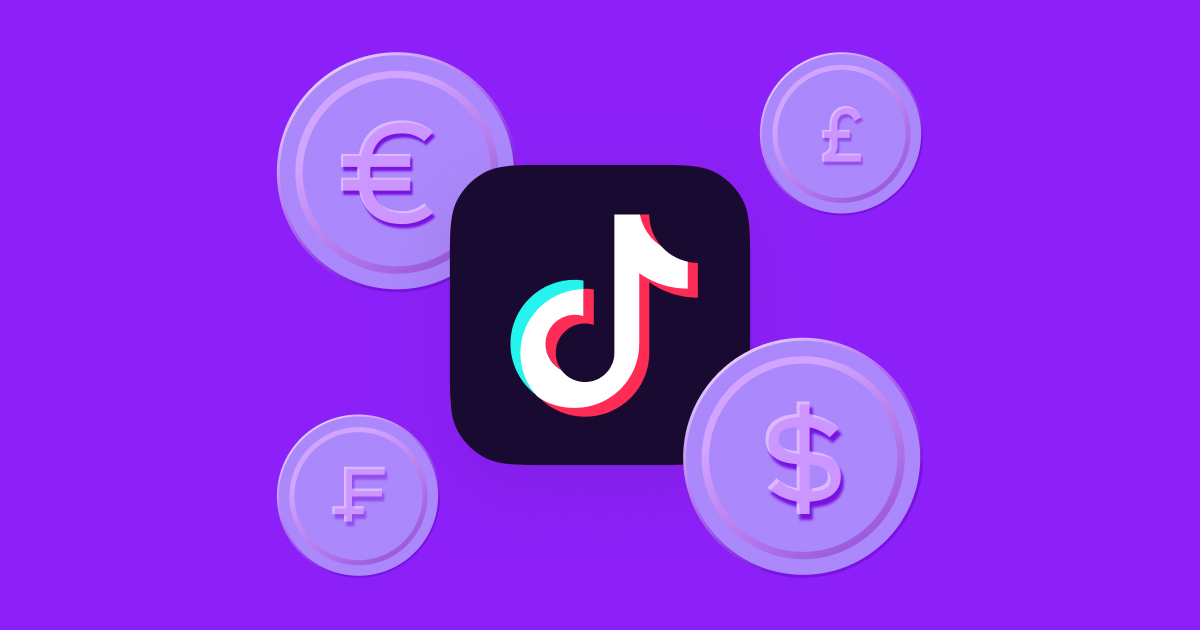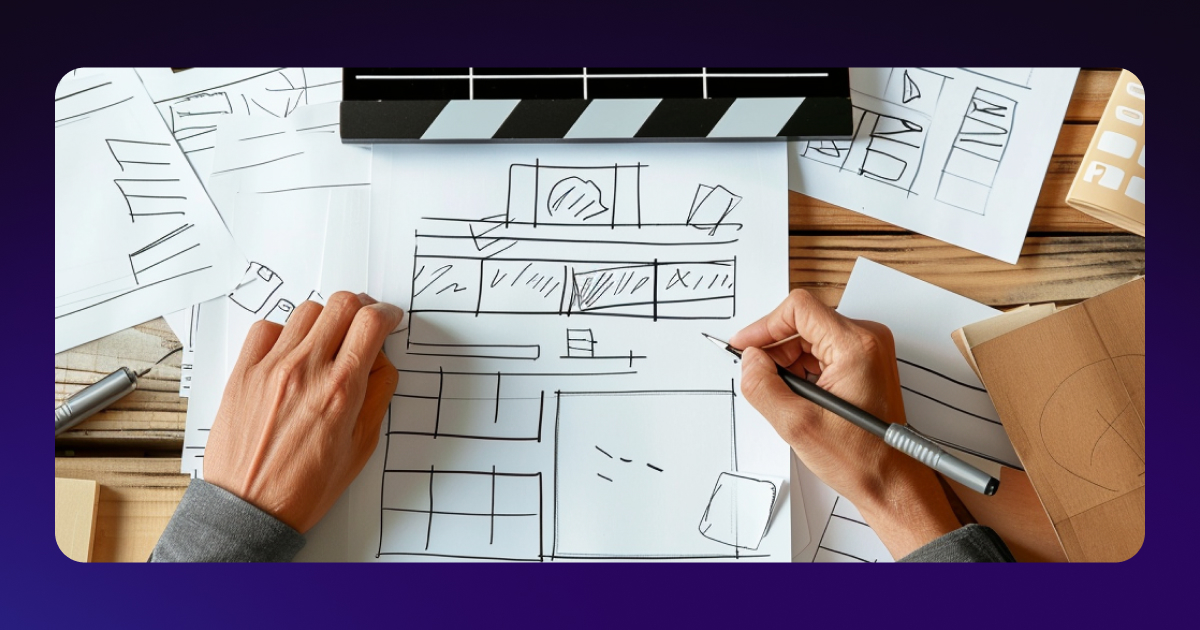As a content creator, adding music tracks to your content can make a big impact on your viewers’ experience. Music adds an emotional impact to your videos and can make your content far more engaging.
You might even have the perfect song in mind — but you need to check if you can legally use certain music before including it in your content. Often, music payments and access to rights are tricky and usually handled by industry professionals. Your best bet as a content creator is to find “royalty-free” songs to use in your content.
Here’s a guide to the meaning of royalty-free music and how to access these tracks for your videos.
What Does Royalty-Free Mean in Music?
Music royalties are payments that performing artists, distribution companies, record labels, and producers earn when a business or individual streams or uses their song in another media format. If you’ve ever heard a song from your favorite band in a movie, someone paid the band or the band’s label a royalty for the rights to use it in the film. Most music generates royalties for artists, producers, and anyone else involved in the creation process.
With royalty-free tracks, the end user (whether that’s an independent video producer or a part-time content creator, like you) doesn’t have to pay those fees directly to any entity.
There are also royalty-free music providers, which are often subscription services that offer patrons access to a library full of tracks. They generally pay the artist and anyone else owed royalties to include these songs in their library, saving creators from worrying about the royalty payment process.
Do I Have to Pay for Royalty-Free Music?
The word “free” can be misleading. Royalty-free music isn’t free of charge; you likely have to pay to access a royalty-free music library and they pay the owners on your behalf.
Although royalty-free music isn’t free in a monetary sense, the “free” part means you’re free from the process of paying royalties directly to the people who created, produced, and distributed it. You’re also free to use this music in your content, provided you use (and pay for) a reputable royalty-free service that owns the rights to the song.
Most royalty-free music providers ask for a one-time fee or monthly subscription that grants you access to their libraries. Once you pay for a royalty-free music service, you can add any songs from those libraries to content like YouTube videos without worrying about rights.
How To Know If a Song Is Royalty-Free
As a conscientious content creator, you want to use music you’ve paid for and are allowed to use. Take the time to confirm that the music you add as a background track to your next YouTube video is royalty-free.
Signing up for a royalty-free music service is the best way to cover your bases. These services take care of paying artists or distributors to save you the hassle. Instead, you can focus on making compelling content and choosing the best song to set the mood of a video without worrying you’re using tracks you didn’t pay for.
Royalty-free Music on TikTok
You can use any of the music in TikTok’s library without worrying about copyright or paying the creator because TikTok has licensing agreements that pay artists. That might not be true for other social media platforms, so be careful about posting TikToks to your other accounts.
What About Copyrights?
Another essential consideration in rightfully using other artists’ work in your content is the copyright status. Music copyrights attribute ownership to the artist(s) who makes a song, giving them the right to sell, use, and distribute their tune as they see fit. When songs have a copyright, you cannot use them in your work unless you have permission.
There are a few easy ways to gain that permission. Some social media platforms, like Instagram or TikTok, allow you to reproduce a song from their music libraries as a Story or Reel background track on your personal account.
Using a royalty-free music service is another good option, as mentioned before. When you pay for these services, the provider typically lists what music you can use from their library and where without infringing on copyright law.
You could also use a service that generates unique original tracks using AI, like Captions’ video editor. Copyrights don’t apply to these songs because a human artist didn’t make them. Here’s how to add AI music to your videos with Captions:
- Click “Create” to upload your video to the Captions app.
- Select “Music” from the toolbar at the bottom of the screen.
- Choose a genre, mood, and theme to generate your sound.
- The app will render your sound and play you the clip, which will match the length of your video. If you’re happy with the result, click “Apply.”
- You can edit your music’s intensity, volume, or ducking to avoid obscuring any audio or add dramatic effects.
- Click “Export” when you’re done editing to save your video and post it to Instagram.
Royalty-Free Versus Copyright-Free
So, if royalty-free music isn’t copyright-free, what does no copyright mean?
Copyright-free music refers to songs that no one owns. Anyone can reproduce copyright-free music without financial or legal repercussions. This music is in the public domain, meaning the work is free of intellectual property rights, and people can access and use it however they wish. Copyrights can expire, meaning music enters the public domain after a set period, but it's usually 70 years after the author’s death.
Royalty-Free Versus Direct Licensing
As you look for royalty-free music providers, know that not all services own the complete rights to the music in their libraries. These companies are intermediaries between music industry entities — like distributors — and users like you, getting you permission to access and reproduce tracks. That permission doesn’t always cover every type of reproduction, though. For example, the permissions for a song may cover a live audio recording but not the original song recording playing in the background.
Since royalty-free music providers don’t own the necessary rights to a track, you could run into a copyright claim if you misuse that song in your video. Consequences include having to take the video off social media platforms or even legal action. This is why it’s important to read through the permissions and copyright information when using a royalty-free service.
However, some music services completely own the rights to the tracks they offer. They give you a direct license to this music, meaning you can reproduce songs from their catalogs in your content without worrying about copyright claims. You’ll want to do your research to make sure you’re allowed to use a piece of music.

3 Benefits of Royalty-Free Music for Content Creation
Once you understand what royalty-free music is and the basics of copyrights, you start to realize just how much work goes into protecting intellectual property and distributing payments in the music industry. To help take a lot of the guesswork out of the process, here’s how to reliably find royalty-free music for your content:
- Avoid misunderstandings — Royalty-free music companies (especially those that do direct licensing) offer zero-hassle solutions to finding music you can legally use in your videos or other content without paying royalties directly to artists, producers, or distributors. Opt for these options instead of hoping you’ve found a public-domain piece.
- Easy payments — These music services typically charge a single, up-front fee or a subscription fee to a vast music library you can continually use. This is much easier than paying for individual songs — especially because doing so could mean navigating copyrights and royalty payments.
- Many options — Royalty-free music libraries offer tens of thousands of songs, so you have an abundance of styles to choose from.

Perfect Your Videos’ Sound With Captions
Choosing audio for your content can dramatically affect the mood — but you don’t need to worry about spending hours finding music that isn’t under copyright. With a few quick taps, you can generate completely unique audio just for your content with Captions AI Music generator. Let the power of AI speed up your editing process and take your videos — and their royalty-free music — to the next level.









